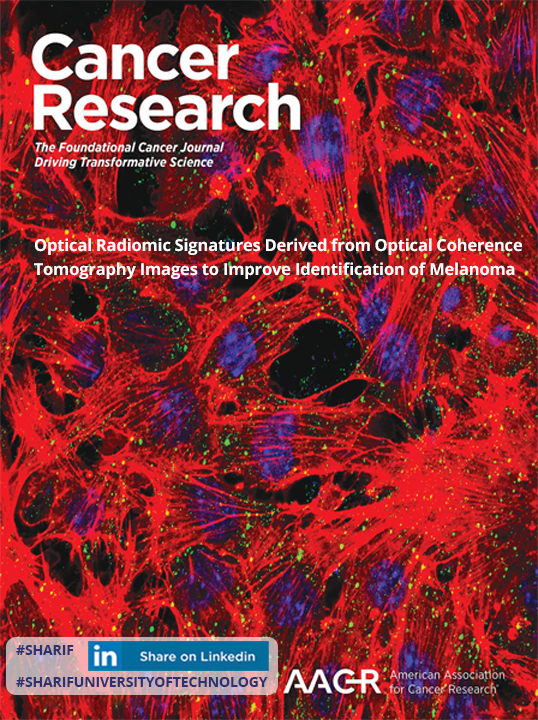The current gold standard for clinical diagnosis of melanoma is excisional biopsy and histopathologic analysis. Approximately 15–30 benign lesions are biopsied to diagnose each melanoma. In addition, biopsies are invasive and result in pain, anxiety, scarring, and disfigurement of patients, which can add additional burden to the health care system. Among several imaging techniques developed to enhance melanoma diagnosis, optical coherence tomography (OCT), with its high-resolution and intermediate penetration depth, can potentially provide required diagnostic information noninvasively. In a research work conducted by the researchers at the Department of Electrical Engineering of Sharif University of Technology an image analysis algorithm is presented, “optical properties extraction (OPE),” which improves the specificity and sensitivity of OCT by identifying unique optical radiomic signatures pertinent to melanoma detection. The performance of the algorithm is evaluated using several tissue-mimicking phantoms and the OPE algorithm is tested on 69 human subjects. The data show that benign nevi and melanoma can be differentiated with 97% sensitivity and 98% specificity. These findings suggest that the adoption of OPE algorithm in the clinic can lead to improvements in melanoma diagnosis and patient experience.
The result of this research by Zahra Turani and Emad Fatemizadeh from SUT is published in the journal of Cancer Research under the title of “Optical Radiomic Signatures Derived from Optical Coherence Tomography Images to Improve Identification of Melanoma”. Sharif University of Technology has collaborated with Wayne State University and Hospital A. C. Camargo in this research work.
Dr. Emad Fatemizadeh is an Associate Professor at Biomedical Engineering Group of the Department of Electrical Engineering of Sharif University of Technology whose research interest lie in Medical Image Analysis, Processing and Understanding, Machine Learning and Pattern Recognition, Biometric Authentication, Identification and Verification. To get familiar with his research work you might visit his personal page at http://ee.sharif.edu/~fatemizadeh/

